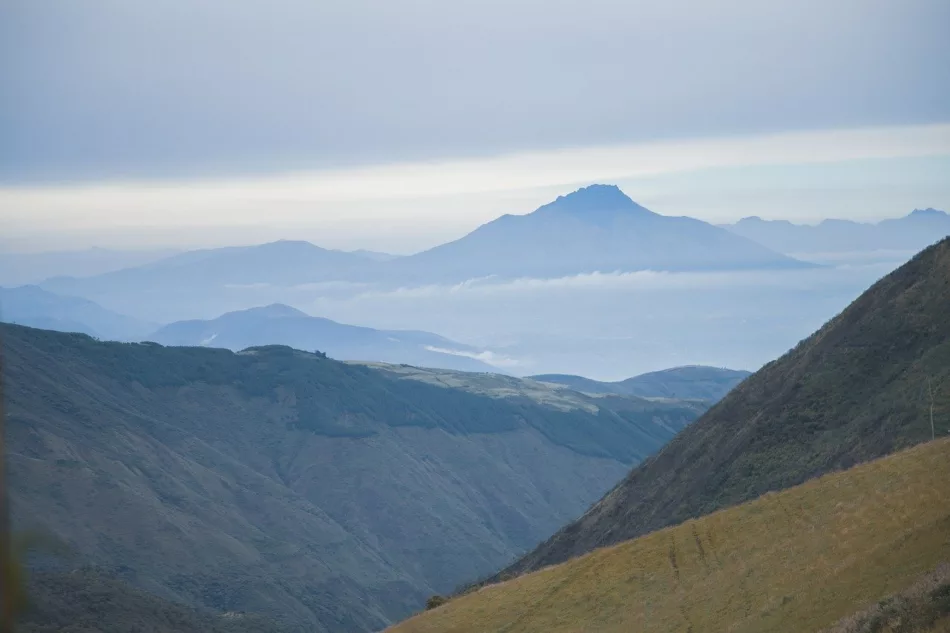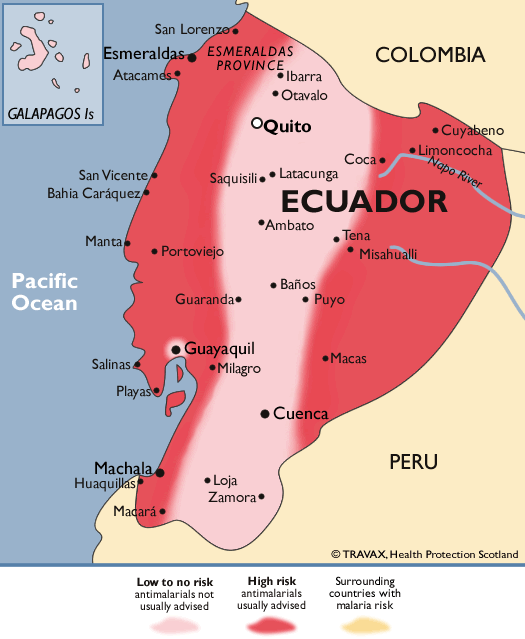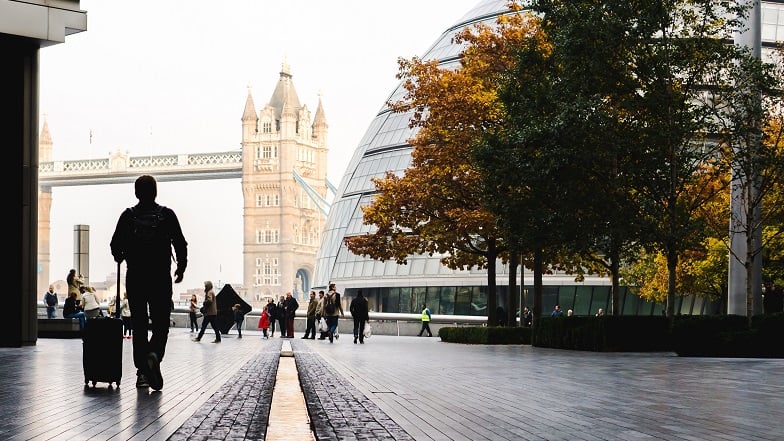Incredible service – so helpful
Excellent service! Chazile went above and beyond to prepare me for my travels to south east Asia. Very kind, sharp and added helpful bits of information that will be useful during my travels. Even created a vaccine booklet for me that I asked for to keep track of my vaccines for the future. Highly recommended The London Vaccination Clinic. Thanks again Chazile 🙂 Nick
Travel Vaccinations for Ecuador
The table below provides a general guide as to the Travel Vaccinations that may be advised to you for travel to Ecuador
Recommended Vaccinations for Ecuador at a Glance
All Travellers: MMR, DTaP
Most Travellers: Typhoid, Hepatitis A
Some Travellers: Hepatitis B, Yellow Fever, Rabies

| Vaccination | Major Risk Factors | Course | Price |
| MMR | Person-to-Person | Course of Two | £60 |
| DTaP | Person-to-Person | Single Dose | £50 |
| Typhoid | Person-to-Person | Single Dose | £65 |
| Hepatitis A | Person-to-Person | Single Dose | £86 |
| Hepatitis B | Person-to-Person | Course of Three | £66 |
| Yellow Fever | Person-to-Person | Single Dose | £90 |
| Rabies | Person-to-Person | Course of 3/4 - intramuscular | £115 |
| Rabies | Person-to-Person | Course of 3/4- intradermal | £66 |
Travellers should be up to date with routine vaccination courses and boosters as recommended in the UK including MMR and DTP.
There is a risk of yellow fever transmission in parts of Ecuador and a vaccination certificate is required for travellers aged one year or over arriving from Brazil, Democratic Republic of the Congo and Uganda and for travellers having transited for more than 12 hours through an airport of the same countries.
On mainland Ecuador, there is a low risk of malaria in areas below 1,500m, including the coastal provinces and Amazon basin. Awareness of risk and bite avoidance arE recommended.
There is no risk of malaria in the Galapagos islands or the city of Guayaquil but bite avoidance recommended.
There is a risk of altitude illness when travelling to destinations of 2,500 metres (8,200 feet) or higher, such as Quito at 2,819m.
Keep up-to-date with the latest travel advice from the Foreign, Commonwealth & Development Office (FCDO) before travelling.
Advice for Travellers to all Destinations
The Vaccinations and Medications that are needed for travel vary from person-to-person. Everyone should have a personal risk assessment with a travel health professional to take into account a range of factors such as itinerary, medical condition, occupational and lifestyle risk factors and previous vaccination history.
All Travellers
All Travellers should ensure that they are up-to-date with Routine Vaccinations including Diphtheria, Tetanus and Polio and Measles, Mumps and Rubella.
Most Travellers
Most travellers will also need to consider a course or booster of Hepatitis A and Typhoid as there is a risk of these diseases across most parts of the world.
Some Travellers
Some Travellers may also be advised additional vaccinations such as Rabies, Japanese Encephalitis and Hepatitis B based on their individual risk assessment.

Risk of Malaria in Ecuador
Malaria is spread by the plasmodium parasite passed to humans from the bite of an anopheles mosquito. Malaria is a serious illness with symptoms include fever, chills, sweats and flu like symptoms. In severe cases, malaria can be fatal. There isn’t currently a vaccine available for our travellers, although there are other ways to protect yourself, see Malaria Information for Travellers.
There is a High Risk of Malaria throughout Ecuador at all times during the year in all areas below 1500 meters. There is a Low to No Risk in the coastal areas and No Risk in Quito, Guayanquil or the Galapagos Islands.
Malaria Prevention
Travellers to areas where there is a Risk of Malaria should get advice regarding Malaria Medication which can be taken to help stop the illness from developing. The type of medication required depends on your destination, itinerary, length of stay and current medical condition. Further reduce the risk of by practicing mosquito Bite Avoidance by using Insect Repellent such as DEET 50% and covering exposed skin by wearing long sleeves and trousers.
Yellow Fever Risk and Certification Requirements for Ecuador
About Yellow Fever
Yellow Fever is a serious viral illness spread by mosquitoes in the tropical regions of Africa and South America. For further information, please see Yellow Fever Vaccination.
Yellow Fever Risk in Ecuador
There is a Risk of Yellow Fever across the whole of Ecuador. Travellers should get advice regarding vaccination prior to travel.
Yellow Fever Certification
There is also a Yellow Fever Certification Requirement for some travellers. For further information, please see Yellow Fever Certification Requirements.
Under International Health Regulations (2005), travellers who have been to an Area affected by Yellow Fever, or who have travelled via an airport of a country affected, are required to present an International Certificate of Vaccination (ICVP).
What our customers say about us.
We love what we do, we believe our enthusiasm shows and we’re very proud of our excellent reputation. We work hard to maintain it, and it’s great when people appreciate our efforts.
Our Nurses
At the London Vaccination Clinic, we are proud to introduce our team of expert nurses who are dedicated to providing excellent customer care and over delivering for our customers. Our nurses possess a high level of skill and expertise, ensuring that every individual receives the best possible preparation and protection for their travel needs, regardless of their destination or personal circumstances.
We prioritize the development of our nurses and take pride in their continuous growth. All our nurses are registered with the UK regulatory body, ensuring their professionalism and adherence to the highest standards of care. To further enhance their knowledge and skills, our nurses receive regular training from our medical and clinical directors, who provide them with the latest updates and advancements in the field.
As a CQC regulated and approved clinic, we are committed to delivering the highest quality of care to our patients. Our dedication to excellence extends across all our clinics located throughout the UK. We strive to create a safe and welcoming environment where individuals can receive comprehensive and personalized care for their travel health needs.
At the London Vaccination Clinic, we understand the importance of your health and well-being while traveling. Our team of skilled nurses is here to ensure that you are well-prepared and protected, allowing you to embark on your journey with confidence and peace of mind.
We operate under the rigorous standards set by the CQC and are committed to delivering top-notch care to our patients at every one of our UK clinics.
Further Travel Health Advice for Ecuador
If you are visiting Quito, the period from June to September is comfortably warm. At the Pacific coast, and in the Galapagos, December through April, temperatures are quite warm, with periodic rain. While touring, drink lots of bottled water.
Do not drink the tap water in Ecuador. Use only bottled water, and also use bottled water for brushing your teeth, no matter which area you visit. Avoid ice cubes.
In Ecuadorian cuisine, diversity is the key. Favourites range from grilled Cuy, which is guinea pig, to a delicious potato pastie stuffed with cheese, called llapingauchos, traditionally served with a fried egg and slices of avocado, sometimes served with beef. If you are served a salad with this or any dish, don’t take the risk. Uncooked vegetables can transmit parasites. Seafood is plentiful, but best saved for visits to the Pacific coast. Most fizzy drinks are available, but the local fruit juices are excellent. Ecuador brews many types of beer, although they are not for connoisseurs.
In Ecuador, it is best to seek care through Private clinics. Generally, health care services are good. It is important to find out more before travelling to remote locales. Arrange in advance to have enough money with you to pay for any health care you might need, since private health care providers expect payment in cash. ATMs are available throughout larger cities.
Protect yourself, and your family, with adequate travel health insurance which will cover your intended itinerary and any unusual activities.
Ecuador is very safe for tourists, but it is always best to use normal precautions when visiting city centres. When touring in rugged areas, and especially in the rainforest, it is important to remember that mosquitoes are a danger. Cover exposed skin as much as possible.
